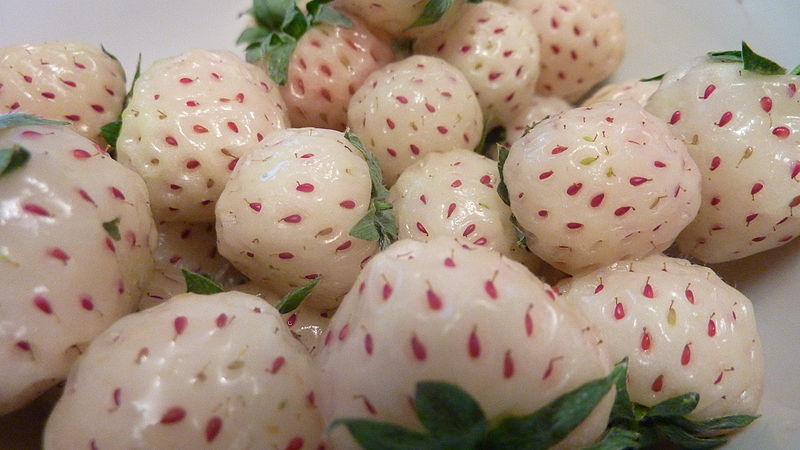If you’ve ever seen a pineberry, you may have thought to yourself that it was some sort of mutant strawberry. It may have drawn you to want to try it, or just the opposite. After all, strawberries are supposed to be either a deep shade of pink or dark red, depending on their maturity, but pineberries are white with hints of pink. It sounds like the description of a fashion show, but instead it is another one of nature’s miracles.
Are pineberries easy to grow, and if so, how do you grow this amazing looking fruit?
Don’t get confused, pineberries are actually strawberries, but are named after their unusual pineapple taste. So if you have any experience growing the average strawberry, then growing pineberries should not be complicated. If you have no experience in growing strawberries, we still believe that this tutorial will be helpful.
First, you must decide which type of pineberry you want to grow and if it is available in your area. There is the “White D”, “White Carolina”, and “White Pineberry”. The White D grows the largest berries of the three types, but even those berries are much smaller than your average strawberry. The best thing to do, though it may be expensive, is to purchase a starter kit for pineberries, because many gardeners have had a lot of trouble growing pineberries straight from their seeds. They may actually grow from seed, but many do not.
Purchase two or three starters and see how they flourish and if all goes well, you can always keep adding to your garden. The plants you order should be self pollinating. You don’t need to worry about cross pollination with regular strawberries. This cross pollination will not change the color or taste of the pineberry, and may even cause you to have a larger growth season.
Don’t be alarmed if your starters show up looking small and fragile, this is the norm when it comes to pineberries. Do your research before committing and see if pineberries and strawberries grow well in your area. There are many ways to find out all over the internet today and you can even find information in the online version of the Farmer’s Almanac. If you live in a cold climate, growing pineberries in a container and giving them shelter during extremely cold temperatures can still yield a good crop.
Growing pineberries in containers:
As long as your chosen container can hold at least a quart of soil, you should be successful growing your pineberry plants that way. Their root system is small so a container approximately 10 to 12 inches round and 8 inches deep, should be sufficient. The plants should not be over watered until they are soggy, but never allow them to get dry. Check the plants daily. The soil should always be moist.
Make certain that your soil is of good quality and made to grow strawberries. If you want to make your own soil, here is a simple recipe:
- 10 parts sterile potting soil
- 10 parts peat moss
- 8 parts perlite
- 4 parts compost
- 1 part sand
Combine all the ingredients and then check the pH levels of the soil before planting. Since pineberries thrive in slightly acidic soil, your pH levels should be anywhere from 5.5 to 6.5. You can even use hanging containers inside the home, to grow your pineberries, as long as the plants are positioned to get 6-8 hours of sunlight a day. From late spring onward, make sure you feed the pineberry plants with a good quality liquid fertilizer. This is the best way to keep your pineberries healthy throughout the growing season. Enjoy!
